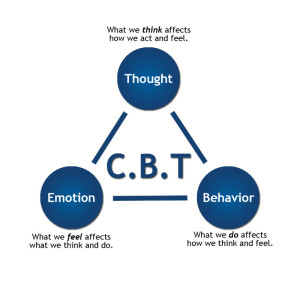Behavioral therapy originated from American “behaviorism. The assumption is that human behavior is learned and can be unlearned or learned anew. Behavioral therapy figures out weather certain behavioral patterns add definition to your life, such as making it complicated or intensifying your issues. In the second step one should be working on changing these behavioral habits.
For example, those who have developed a significant level of depression often withdraw from their hobbies. This allows them to experiences a level of unhappiness or isolation. Cognitive therapy helps to identify this mechanism and find ways to become active.
For anxiety disorder, behavioral therapy includes various learning methods. For example, you can learn to reduce anxiety with mindfulness and being more aware of your surroundings. When doing tis, you are now concentrating on other areas instead of bringing attention to your anxiety.
Harmful Thoughts VS. Un-harmful Thoughts
Harmful habits can ruin ones image of them self.
For example: (http://www.ncbi.nlm.nih.gov/pubmedhealth/PMH0072481/)
| Reaction | Harmful | Neutral |
|---|---|---|
| Thoughts | “He ignored me – he doesn’t like me anymore.” | “He didn’t notice me – maybe he doesn’t feel well. I should give him a call and find out how he is doing.” |
| Feelings | Someone who thinks like this feels down, sad and rejected. | These thought patterns do not cause any negative feelings. |
| Behavior | The consequence of this thought is to avoid this person in the future, although the assumption could be completely false. | This thought is a prompt to get back in touch with the person to find out if everything is all right. |
How does cognitive behavioral therapy differ from other psychotherapies?
Cognitive behavioral therapy is defines as a problem -oriented strategy. its primary focus is on current problems and finding solutions for them. Unlike psychoanalysis for example, it does not deal with the past. Cognitive behavioral therapy is much more concerned with dealing with current problems. The most important thing is helping people to help themselves.

